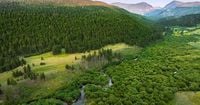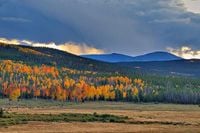The future of America’s wildest forests is once again up for debate, as the U.S. Department of Agriculture (USDA) and the Forest Service move to roll back protections for more than 44 million acres of federal lands, including the iconic Tongass National Forest in Alaska. The proposal, announced on August 29, 2025, has reignited a fierce national dispute over conservation, indigenous rights, timber industry interests, and the science of wildfire management.
At the heart of the controversy is the Roadless Area Conservation Rule—commonly known as the Roadless Rule—which has shielded undeveloped national forest lands from road-building and logging since its inception in 2001. According to KTOO, this regulation currently protects more than half of the Tongass, the world’s largest coastal temperate rainforest and a vital resource for Southeast Alaska’s Native communities. But now, the rule is on the chopping block yet again.
“The current situation is a political struggle between the proposed repeal of the Roadless Rule and the introduction of RACA,” said Tlingit advocate Xaawk’w Tláa Yolanda Fulmer during the Southeast Tribal Environmental Forum in Juneau. She was referring to the Roadless Area Conservation Act (RACA), a bill reintroduced in the U.S. House of Representatives this summer that would permanently codify the Roadless Rule into law. Fulmer argued that passing RACA could finally end the “political ping pong” between extractive industry interests and those who depend on intact forests for their livelihoods and traditions.
Why all the fuss over roads? As Fulmer explained, “Road construction often leads to logging, mining, forest fires and development—development which fragments ecosystems. The Roadless Rule helps maintain intact forests, streams and shorelines where traditional foods thrive.” For Alaska Native tribes, these lands are more than just wilderness; they are the foundation of culture and sustenance. Joel Jackson, President of the Organized Village of Kake, emphasized the importance of healthy forests for salmon, a staple food source. “If the stream isn’t cool enough, those fish aren’t going to be able to spawn,” Jackson told KTOO. The cycle of salmon feeding the forest, and the forest sheltering the salmon, is a delicate balance that many fear could be upended by renewed logging and road-building.
The Roadless Rule has survived legal and political whiplash for decades. Originally established by the Clinton administration, it was rolled back during President Donald Trump’s first term, then reinstated in 2023 by President Joe Biden. The latest rollback proposal is directly tied to Trump’s 2025 executive order ending the ban on constructing roads in undeveloped forest areas, signaling a return to policies that favor timber extraction and rural economic development.
“This is something I hear from folks from Ketchikan all the way up to Yakutat on a regular basis,” said U.S. Rep. Nick Begich, who supports expanding logging in the Tongass. “How do we bring timber back?” Begich’s remarks echo the Trump administration’s rationale, as reported by Bloomberg Law: the Roadless Rule places an “undue burden” on the timber industry and stifles economic growth in rural communities. The Forest Service’s notice in the Federal Register also claims that rescinding the rule is necessary to reduce wildfire risk, boost domestic wood products, and cut regulatory red tape.
But environmental lawyers and scientists aren’t buying it. “The administration continues to insist that repealing the Roadless Rule is necessary to reduce wildfire risk, but they fail to grapple with the fact that wildfire ignitions are far more common in roaded landscapes,” said Timothy Preso, managing attorney at Earthjustice, in comments to Bloomberg Law. Preso pointed to Forest Service research from 2020 showing that more wildfires ignite near roads, and that roadless areas have no effect on wildfire burn rates. The Roadless Rule, he argues, already allows local forest managers to address wildfire threats when needed.
Other legal experts warn that the administration’s justification for the rollback is shaky at best. Murray Feldman, a partner at Holland & Hart LLP, noted that the Forest Service “offers no hint in the Federal Register notice of how it might” meet the legal standard for rescinding a prior policy. The National Forest Management Act of 1976, enacted to curb clearcutting, still requires national environmental standards and processes. “Although the administration may have valid policy reasons behind the proposal, that alone may not be enough to support the proposed revocation in the face of the inevitable future litigation challenges,” Feldman told Bloomberg Law.
On the other side, timber industry groups welcome the rollback. Nick Smith, spokesman for the American Forest Resource Council, argues that if it was legal for a president to establish the Roadless Rule by executive action, it’s equally legal for another president to rescind it. “It’s hard to argue that another President can’t take Executive action to rescind the Roadless Rule,” Smith said in an email to Bloomberg Law.
Meanwhile, the process for public input has itself become a flashpoint. The USDA’s announcement allows less than a month—August 29 through September 19—for public comment, a sharp departure from the 90 days granted during the last major review. “It doesn’t allow time for the agency to meet its obligation to consult with tribes on a government-to-government basis,” said Kate Glover, an attorney at Earthjustice. “Typically, at least 120 days is needed for that.” Susan Jane Brown, chief counsel at environmental nonprofit Silvix Resources, added that tribes are not being included as cooperating agencies in the process, raising concerns about meaningful participation and the adequacy of tribal consultation.
Activists and conservationists are mobilizing quickly. Nathan Newcomer of the Southeast Alaska Conservation Council told KTOO, “We know what they’re going to do. They’re not going to listen to anybody, but we still need to get on the record and make it sure and clear that people in Southeast Alaska and across the nation want to see the Roadless Rule kept in place.” When the Trump administration attempted a rollback in 2020, nearly all public comments favored keeping the rule. Now, with the expedited timeline, groups are scrambling to ensure their voices are heard before the September 19 deadline.
Beyond Alaska, the Roadless Rule’s fate has national implications. The protections cover vast mountain ranges in Idaho, the peaks above Utah’s Bears Ears National Monument, and the Appalachian forests in Virginia. However, the current rollback proposal leaves existing protections in Colorado and Idaho intact, according to the Forest Service notice.
As the public comment period ticks away, the stage is set for another round of legal and political battles. Environmental groups are already preparing for court challenges, arguing that the administration’s case is not supported by science or law. Industry advocates, meanwhile, see an opportunity to revive struggling rural economies and assert presidential authority over national forest policy.
For the tribes and communities of Southeast Alaska, the stakes could not be higher. The outcome of this fight will determine not only the future of the Tongass but also the balance between conservation and development across millions of acres of America’s last wild forests.






